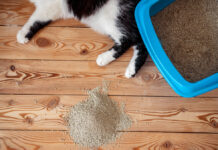Dogs and their dietary needs can sometimes leave us scratching our heads. If you’ve ever wondered “can dogs eat nopales,” you’re not alone. These Mexican cactus paddles are gaining popularity in human diets, but what about our furry friends?
What Are Nopales?
Nopales, also known as prickly pear cactus pads are traditional Mexican vegetables that have been used in cuisine for centuries. These flat green pads are packed with nutrients and have a slightly tart, crispy texture similar to green beans.
The Quick Answer: Can Dogs Eat Nopales?
Yes, dogs can eat nopales in moderation! These cactus paddles are safe and can even provide some health benefits for your furry friend. However, proper preparation is crucial to ensure your pup’s safety.
Benefits of Feeding Nopales to Dogs
When prepared correctly nopales offer several nutritional benefits
- Low in calories
- High in fiber
- Rich in vitamins (A, C, K, and B6)
- Contains minerals (calcium, magnesium, and potassium)
- Anti-inflammatory properties
- Natural antioxidants
For more information about maintaining your dog’s healthy diet, check out our comprehensive guide to dog nutrition
How to Safely Prepare Nopales for Dogs
-
Remove All Spines
- Carefully clean the cactus pad
- Remove all spines and glochids
- Double-check for any remaining thorns
-
Proper Cooking Method
- Boil or grill without seasoning
- Avoid adding salt, oils, or spices
- Cut into small, manageable pieces
Serving Size and Frequency
According to Pet like boss, portion control is essential:- Small dogs: 1-2 small pieces- Medium dogs: 2-3 medium pieces- Large dogs: 3-4 pieces
Potential Risks and Precautions
While nopales are generally safe, be aware of:- Choking hazards if not properly cut- Digestive issues if overfed- Allergic reactions (rare but possible)- Raw nopales may cause stomach upset
Signs Your Dog Shouldn’t Eat Nopales
Watch for these symptoms:- Vomiting- Diarrhea- Excessive drooling- Loss of appetite- Lethargy
Alternative Healthy Vegetables for Dogs
If your pup doesn’t take to nopales, try these alternatives:- Carrots- Green beans- Sweet potatoes- Cucumber- Pumpkin
Tips for Introducing Nopales to Your Dog’s Diet
-
Start Small
- Begin with tiny portions
- Monitor reactions
- Gradually increase if tolerated well
-
Consistency Matters
- Always prepare the same way
- Keep portions consistent
- Maintain regular feeding schedule
Common Mistakes to Avoid
- Don’t feed raw nopales
- Never serve with spines attached
- Avoid seasoned or prepared nopales
- Don’t overdo portion sizes
- Never force-feed if your dog shows disinterest
When to Consult Your Vet
Seek veterinary advice if:- Your dog has existing health conditions- You notice adverse reactions- You’re unsure about portion sizes- Your dog has a sensitive stomach
The Bottom Line
Can dogs eat nopales? The answer is yes, but with proper preparation and moderation. These nutritious cactus paddles can be a healthy addition to your dog’s diet when served correctly. Remember to always introduce new foods slowly and watch for any adverse reactions.
FAQs About Dogs and Nopales
Are raw nopales safe for dogs?
No, it’s best to cook nopales before serving them to your dog.
How often can I feed nopales to my dog?
Start with once a week and adjust based on your dog’s tolerance.
Can puppies eat nopales?
Wait until puppies are at least 12 weeks old before introducing nopales.
What if my dog accidentally eats raw nopales?
Monitor them for digestive issues and contact your vet if symptoms appear.
Can nopales help with dog digestion?
Yes, the fiber content can aid digestion when served in appropriate amounts.
Conclusion
Adding nopales to your dog’s diet can be a healthy choice when done correctly. Remember to always prepare them properly, serve in moderation, and monitor your pup’s reaction. As with any dietary change, it’s better to err on the side of caution and start slow.
By following these guidelines, you can safely introduce this nutritious veggie to your four-legged friend’s diet. Just remember that every dog is different, and what works for one might not work for another. Keep an eye on your pup’s response and adjust accordingly.
For more pet care tips and advice, visit Pet like boss for comprehensive guides on keeping your furry friend healthy and happy!












